| Module 1 | Background |
Unit 1
|
Unit 2
| |||||
|---|---|---|---|---|---|---|---|---|
| Module 2 | Partnerships |
Unit 1
|
Unit 2
|
Unit 3
| ||||
| Module 3 | Proposed indicators |
Unit 1
| ||||||
| Module 4 | School attendance |
Unit 1
|
Unit 2
|
Unit 3
|
Unit 4
| |||
| Module 5 | School disciplinary actions |
Unit 1
|
Unit 2
|
Unit 3
| ||||
| Module 6 | School readiness |
Unit 1
|
Unit 2
|
Unit 3
| ||||
| Module 7 | Next steps |
Unit 1
| ||||||
| Module 8 | Appendices |
Unit 1
|
Unit 2
|
Unit 3
|
Unit 4
|
Unit 5
|
Unit 6
|
Unit 7
|
| Module 9 | References |
Unit 1
|
References
Below are references cited throughout this playbook.
- CDC. “What Is Children’s Mental Health?” Centers for Disease Control and Prevention, July 26, 2023. https://www.cdc.gov/childrensmentalhealth/basics.html
- “Promoting Mental Health and Well-Being in Schools: An Action Guide for School and District Leaders.” Division of Adolescent and School Health (DASH), National Center for Chronic Disease Prevention and Health Promotion (NCCDPHP), Centers for Disease Control and Prevention (CDC), December 2023. https://www.cdc.gov/healthyyouth/mental-health-action-guide/pdf/DASH_MH_Action_Guide_508.pdf.
- Himmelman, Arthur T. “Collaboration for a change: definitions, decision-making models, roles, and collaboration process guide.” 2002. http://tennessee.edu/wp-content/uploads/2019/07/Himmelman-Collaboration-for-a-Change.pdf
- Flodgren, Gerd, Mary Ann O’Brien, Elena Parmelli, and Jeremy M Grimshaw. “Local Opinion Leaders: Effects on Professional Practice and Healthcare Outcomes.” The Cochrane Database of Systematic Reviews 2019, no. 6 (June 24, 2019): CD000125. https://doi.org/10.1002/14651858.cd000125.pub5
- “Engaging Innovative Advocates as Public Health Champions.” FHI 360, September 2010. https://www.fhi360.org/sites/default/files/media/documents/engaging-innovative-advocates-as-public-health-champions.pdf
- Center on the Developing Child at Harvard University. “Caring for Children’s Mental Health: Why It’s Crucial to Start Early,” 2015. Accessed March 28, 2024. https://developingchild.harvard.edu/resources/inbrief-early-childhood-mental-health-video/
- Williams, P. Gail, and Marc Alan Lerner. “School Readiness.” Pediatrics 144, no. 2 (July 22, 2019): e20191766. https://doi.org/10.1542/peds.2019-1766. https://doi.org/10.1542/peds.2019-1766
- Riddle, Travis, and Stacey Sinclair. “Racial Disparities in School-Based Disciplinary Actions Are Associated with County-Level Rates of Racial Bias.” Proceedings of the National Academy of Sciences 116, no. 17 (April 2, 2019): 8255–60. https://doi.org/10.1073/pnas.1808307116
United States Government Accountability Office. “K-12 EDUCATION Discipline Disparities for Black Students, Boys, and Students with Disabilities Report to Congressional Requesters United States Government Accountability Office,” 2018. https://www.gao.gov/assets/gao-18-258.pdf
“Using Chronic Absence to Map Interrupted Schooling, Instructional Loss and Educational Inequity: Insights from School Year 2017-18 Data.” Attendance Works, February 2021. https://www.attendanceworks.org/wp-content/uploads/2019/06/Attendance-Works-Using-Chronic-Absence-to-Map_020221.pdf
- Sabol, Terri J., Courtenay L. Kessler, Leoandra Onnie Rogers, Amelie Petitclerc, Jamilah Silver, Margaret Briggs-Gowan, and Lauren S. Wakschlag. “A Window into Racial and Socioeconomic Status Disparities in Preschool Disciplinary Action Using Developmental Methodology.” Annals of the New York Academy of Sciences 1508, no. 1 (February 2022): 123–36. https://doi.org/10.1111/nyas.14687.
U.S. Department of Health and Human Services. “Social Determinants of Health.” health.gov. Office of Disease Prevention and Health Promotion, 2021. https://health.gov/healthypeople/objectives-and-data/social-determinants-health
Attendance Works. “The Problem–Attendance Works,” 2017. https://www.attendanceworks.org/chronic-absence/the-problem/
Jordan, Phyllis, and Raegen Miller. “Who’s In: Chronic Absenteeism under ESSA.” FutureEd, September 26, 2017. https://www.future-ed.org/whos-in-chronic-absenteeism-under-the-every-student-succeeds-act/
U.S. Department of Education. “Chronic Absenteeism in the Nation’s Schools.” Ed.gov, 2015. https://www2.ed.gov/datastory/chronicabsenteeism.html#intro
- Jordan and Miller, “Who’s In: Chronic Absenteeism under ESSA.”
- Carminucci, Joanne, Sarah Hodgman, Jordan Rickles, and Mike Garet. “Student Attendance and Enrollment Loss in 2020-21.” American Institutes for Research, June 2021. https://www.air.org/sites/default/files/2021-07/research-brief-covid-survey-student-attendance-june-2021_0.pdf
Bauer, Lauren, Patrick Liu, Diane Schanzenbach, and Jay Shambaugh. “Reducing Chronic Absenteeism under the Every Student Succeeds Act.” Attendance Works, Brookings Institute, April 2018. https://www.attendanceworks.org/wp-content/uploads/2018/04/Hamilton_project_-reducing_chronic_absenteeism_under_the_every_student_succeeds_act.pdf
- Cutler, David M., and Adriana Lleras-Muney. “Education and Health: Evaluating Theories and Evidence.” Working Paper. Working Paper Series. National Bureau of Economic Research, July 2006. https://doi.org/10.3386/w12352.
“For Health Providers: Why Attendance Matters.” Attendance Works, updated 2022. https://www.attendanceworks.org/wp-content/uploads/2017/08/health-providers-2015.pdf
- Cutler and Lleras-Muney, “Education and Health: Evaluating Theories and Evidence.”
- “Chronic Absence: Our Top Pick for the ESSA School Quality or Student Success Indicator a Policy Brief.” Attendance Works, September 2016. https://attendanceworks.org/wp-content/uploads/2017/08/ESSA-Brief_083016-revised.pdf
“Forum Guide to Collecting and Using Attendance Data.” National Center for Education Statistics, 2018. https://nces.ed.gov/pubs2017/NFES2017007.pdf
“Guidelines for a National Definition of Truancy and Calculating Rates.” Office of Justice Programs, National Center for School Engagement, August 2006. https://www.ojp.gov/sites/g/files/xyckuh241/files/media/document/truancy_toolkt_3.pdf
- National Center for Education Statistics, “Forum Guide to Collecting and Using Attendance Data.”
- National Center for Education Statistics, “Forum Guide to Collecting and Using Attendance Data.”
- Attendance Works. “Monitoring Attendance in Distance Learning,” August 2023. https://www.attendanceworks.org/chronic-absence/addressing-chronic-absence/monitoring-attendance-in-distance-learning/.
Johnson, Sara B., Anne Edwards, Tina L. Cheng, Kelly J. Kelleher, Jennifer W. Kaminski, and Erin R. Fox. “Vital Signs for Pediatric Health: Chronic Absenteeism.” NAM Perspectives, June 26, 2023. https://doi.org/10.31478/202306c.
- Attendance Works. Chronic Absence: Or Top Pick for the ESSA School Quality or Student Success Indicator. https://attendanceworks.org/wp-content/uploads/2017/08/ESSA-Brief_083016-revised.pdf
- S. Department of Education. School Climate and Discipline. https://www2.ed.gov/policy/gen/guid/school-discipline/index.html
- Balfanz R, Byrnes V, Fox J. Sent home and put off-track: The antecedents, disproportionalities and consequences of being suspended in ninth grade. Prepared for the Center for Civil Rights Remedies and the Research-to-Practice Collaborative. https://civilrightsproject.ucla.edu/resources/projects/center-for-civil-rights-remedies/school-to-prison-folder/state-reports/sent-home-and-put-off-track-the-antecedents-disproportionalities-and-consequences-of-being-suspended-in-the-ninth-grade/balfanz-sent-home-ccrr-conf-2013.pdf
- Leading Health Indicators: Social Determinants. Healthy People website. https://www.healthy-people.gov/2020/leading-health-indicators/2020-lhi-topics/Social-Determinants
- DeBaun B, Roc M; Alliance for Excellent Education. Well and Well-Off: Decreasing Medicaid and Health-Care Costs by Increasing Educational Attainment. https://all4ed.org/wp-content/uploads/2013/08/WellWellOff.pdf
- Massachusetts Department of Education. Dropout Reduction: Prevention, Intervention and Recovery. https://www.doe.mass.edu/dropout/overview.html?section=consequences
- Department of Education. Office for Civil Rights. Civil Rights Data Collection.https://www2.ed.gov/about/offices/list/ocr/data.html
- Department of Education Office for Civil Rights. Civil Rights Data Collection.https://www2.ed.gov/about/offices/list/ocr/data.html
- Center on Positive Behavioral Interventions and Supports (PBIS). Practice Guides. https://www.pbis.org/resource/pbis-technical-guide-on-classroom-data
- National Education Goals Panel. The Goal 1 Technical Planning Subgroup Report on School Readiness. Washington, DC: National Education Goals Panel; 1991. https://www2.ed.gov/pubs/AchGoal1/goal1.html
- Williams PG, Lerner MA, AAP Council on Early Childhood, AAP Council on School Health. School Readiness. Pediatrics. 2019;144(2):e20191766. https://pediatrics.aappublications.org/content/pediatrics/144/2/e20191766.full.pdf
- Reardon SF, Portilla XA. Recent Trends in Income, Racial, and Ethnic School Readiness Gaps at Kindergarten Entry. American Educational Research Association; 2016.https://journals.sagepub.com/doi/pdf/10.1177/2332858416657343
- Kaminski JW, Barrueco S, Kelleher KJ, Hoagwood K, Edwards A, Fox EG. Vital Signs for Pediatric Health: School Readiness. 2023. Available at: https://nam.edu/vital-signs-for-pediatric-health-school-readiness/. (accessed December 2, 2023).
- Heckman, J. J. 2006. Skill formation and the economics of investing in disadvantaged children. Science 312(5782): 1900–1902. https://doi.org/10.1126/science.1128898. Available at: https://jenni.uchicago.edu/papers/Heckman_Science_v312_2006.pdf. (accessed December 2, 2023)
- Center on the Developing Child. Health and Learning Are Deeply Interconnected in the Body: An Action Guide for Policy Makers. Harvard University.https://46y5eh11fhgw3ve3ytpwxt9r-wpengine.netdna-ssl.com/wp-content/uploads/2020/10/2020_WP15_actionguide_FINAL.pdf.
- Kaminski JW, Barrueco S, Kelleher KJ, Hoagwood K, Edwards A, Fox EG. Vital Signs for Pediatric Health: School Readiness. 2023.
- Janus M, Offord D. 2007. Development and psychometric properties of the Early Development Instrument (EDI): A measure of children’s school readiness. Canadian Journal of Behavioural Science 39(1): 1–22.
- Hagan JF, Shaw JS, Duncan PM. Bright Futures: Guidelines for Health Supervision of Infants, Children, and Adolescents, 4th ed. Elk Grove Village, IL: American Academy of Pediatrics; 2017. https://brightfutures.aap.org/Bright%20Futures%20Documents/BF4_Introduction.pd

